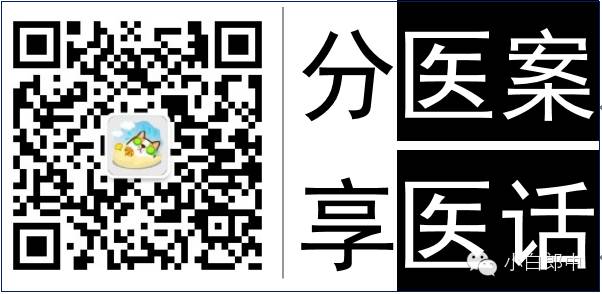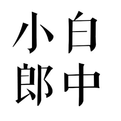
Clinical Reference Articles in Traditional Chinese Medicine

Abstract: The COVID-19 pandemic has heightened awareness of the damp-heat pathogen. The treatment of damp-heat in warm disease theory is considered in the context of the Upper, Middle, and Lower Jiao. The specific formulas for treating these three Jiao are as follows.
Treatment of Damp-Heat Syndrome
Formulas for Upper, Middle, and Lower Jiao Damp-Heat Syndrome
1. The Three Musketeers of Upper Jiao Damp-Heat
1. Ma Huang Xing Ren Yi Yi Gan Cao Tang combined with Qian Jin Wei Jing Tang plus Yu Xing Cao and Che Qian Zi (Ma Huang Xing Ren Yi Yi Gan Cao Tang is found in Zhang Zhongjing’s “Jin Gui Yao Lue”, Qian Jin Wei Jing Tang is from Sun Simiao’s “Bei Ji Qian Jin Yao Fang”)
Ingredients: Ma Huang, Xing Ren, Yi Yi Ren, Gan Cao, Wei Jing, Dong Gua Zi, Tao Ren, Yu Xing Cao, Che Qian Zi (or Che Qian Cao).
Indications: Damp-heat obstructing the lungs, with dampness heavier than heat. Symptoms include cough, yellow sticky phlegm, or dry cough, sore throat, fever, chest tightness, abdominal distension, poor appetite, yellow urine, sticky stools, pale red tongue or red tip, red tongue, with a thin yellow greasy or yellow greasy coating.
2. Ma Huang Xing Ren Yi Yi Gan Cao Tang combined with Huang Yu Xia Lou Tang (Ma Huang Xing Ren Yi Yi Gan Cao Tang is found in Zhang Zhongjing’s “Jin Gui Yao Lue”, Huang Yu Xia Lou Tang is Dr. He Kuanqi’s formula)
Ingredients: Ma Huang, Xing Ren, Yi Yi Ren, Gan Cao, Huang Qin, Yu Xing Cao, Ban Xia, Gua Lou.
Indications: Damp-heat obstructing the lungs, with equal dampness and heat. Symptoms include cough, yellow sticky phlegm, fever, chest tightness, chest pain, sore throat, yellow urine, dry bitter mouth, red tongue with yellow greasy coating.
3. Xiao Chai Hu Tang (Xiao Chai Hu Tang combined with Ban Xia Hou Po Tang)
Ingredients: Chai Hu, Huang Qin, Ban Xia, Sheng Jiang, Ren Shen, Gan Cao, Da Zao, Hou Po, Zi Su Ye, Fu Ling.
Indications: Damp-heat obstructing the lungs, with concurrent spleen and stomach deficiency and cold. In addition to symptoms of damp-heat obstructing the lungs, there are symptoms of spleen and stomach deficiency and cold, such as pale tender or pale purple tongue with tooth marks, sallow complexion, yellow palms, discomfort in the stomach after consuming cold food or exposure to cold wind, and severe abdominal pain and diarrhea, with loose or watery stools.
2. The Three Musketeers of Middle Jiao Damp-Heat
1. San Ren Tang (Wu Ju Tong’s “Wen Bing Tiao Bian”)
Ingredients: Xing Ren, Bai Dou Kou, Yi Yi Ren, Hou Po, Ban Xia, Tong Cao, Hua Shi, Dan Zhu Ye.
Indications: Damp-heat syndrome, with dampness heavier than heat. Symptoms include abdominal distension, chest tightness, poor appetite, heavy head and pain, fatigue in limbs, pale red tongue, with a slightly yellow greasy or light yellow greasy coating.
2. Gan Lu Xiao Du Dan (Wang Mengying’s “Wen Re Jing Wei”)
Ingredients: Bai Dou Kou, Huo Xiang, Yin Chen, Hua Shi, Mu Tong, Shi Chang Pu, Huang Qin, Lian Qiao, Chuan Bei Mu, She Gan, Bo He. Commercially available Gan Lu Xiao Du Wan is also available.
Indications: Damp-heat syndrome, with equal dampness and heat. Symptoms include red tip or red tongue, yellow greasy or thick yellow coating, possible fever, abdominal distension or pain, poor appetite or lack of appetite, sticky and difficult bowel movements, or skin eczema, heavy head and body.
3. Ban Xia Xie Xin Tang (Zhang Zhongjing’s “Shang Han Lun”)
Ingredients: Huang Qin, Huang Lian, Ban Xia, Gan Jiang, Ren Shen, Zhi Gan Cao, Da Zao. Indications: Middle Jiao damp-heat, with concurrent spleen and stomach deficiency and cold. In addition to symptoms of middle Jiao damp-heat, there are symptoms of spleen and stomach deficiency and cold, such as pale tender or pale purple tongue with tooth marks, sallow complexion, yellow palms, discomfort in the stomach after consuming cold food or exposure to cold wind, and severe abdominal pain and diarrhea, with loose or watery stools.
3. The Three Musketeers of Lower Jiao Damp-Heat
1. Ge Gen Qin Lian Tang (Zhang Zhongjing’s “Shang Han Lun”)
Ingredients: Ge Gen, Huang Lian, Huang Qin, Zhi Gan Cao.
Indications: Intestinal damp-heat syndrome. Symptoms include diarrhea, foul-smelling stools, burning sensation in the anus, possible fever, red tongue with yellow greasy coating.
2. Ba Zheng San (“Tai Ping Hui Min He Ji Ju Fang”)
Ingredients: Bian Xu, Qu Mai, Mu Tong, Hua Shi, Che Qian Zi, Da Huang, Zhi Zi, Zhi Gan Cao, Deng Xin Cao.
Indications: Bladder damp-heat syndrome. Symptoms include frequent urination, urgency, yellow urine, painful urination, difficulty urinating, possible urinary retention, fullness in the lower abdomen, red tongue with yellow greasy coating. It can also be used for treating damp-heat in the genital area, such as yellow discharge and other related conditions.
3. Hong Teng Di Yu Tang (Dr. He Kuanqi’s formula)
Ingredients: Hong Teng, Sheng Di Yu, Bai Jiang Cao (or Bai Tou Weng), Huang Bai, Chun Gen Pi, Chen Pi.
Indications: Vaginal or genital damp-heat syndrome, can also be used for intestinal damp-heat syndrome.
Symptoms include yellow, thick, foul-smelling vaginal discharge in women; in men, prostatitis with symptoms of frequent urination, urgency, painful urination, difficulty urinating, split urine stream, post-urination dripping, increased nighttime urination, and white discharge from the urethra during urination or defecation; diarrhea, lower abdominal pain, sticky stools, and urgency.
Red tongue or pale red tongue, with yellow greasy or root yellow greasy coating.
Book Title: “A Beginner’s Guide for Practicing TCM Physicians” by He Kuanqi
You May Also Like, click to read the original text:
Master Li Shimao: New Insights on Gan Lu Xiao Du Dan in Clinical Practice
Fan Yuanwu: Gan Lu Xiao Du Dan for Treating Gastrointestinal Damp-Heat, Using Lingnan Herbs for Better Results
//////////
【 Read Previous Exciting Articles 】
#Introduction to TCM Collection #Twelve Meridians Explained #Donghai Medical Collection
#Experience of Old TCM Doctors #Wonderful TCM Formulas #Proven Secret Formulas #Masters of Traditional Chinese Medicine
#Famous Cases from Shang Han #Selected Famous Cases from Jin Gui
#Si Jun Zi Tang #Etiology Assignment #Herbal Properties Assignment
#Herbal Properties Song of 400 Flavors #Medical Three-Character Classic
#Daily Insights from Mentorship
#Daily Insights on Principles, Methods, Formulas, and Herbs
#TCM Serialized Collection
Master He Ren: What is the Essence of Using Wen Jing Tang?
Zhou Zhongying: Insights and Techniques from 60 Years of TCM Diagnosis (All Essentials)
Ding Guangdi: Qiang Huo Sheng Shi Tang for Treating “Five Morning Diarrhea”
Unexpectedly, “Qing Gu San” is indeed the remedy for fever after bone fractures!
Dan Zha San for Treating Hyperlipidemia (Including Four Proven Recipes for High Lipids)
Shanghai Shen’s 600-Year Family Secret Formula for Women’s Diseases
Remarkable! A Wonderful Experience Using Ancient Formulas to Treat Tooth Decay!
Ancient Formula “San Liang Ban” for Quick Recovery from Lumbar Muscle Strain!
[Collection] Eight Formulas from Nanshi for Treating Insomnia, Hypertension, and Gastrointestinal Disorders!

Recommended Reading:


-END-


